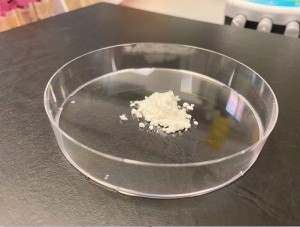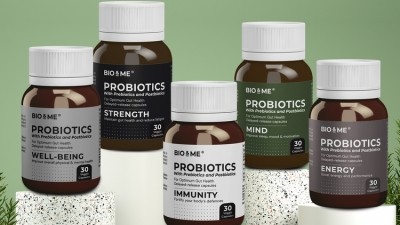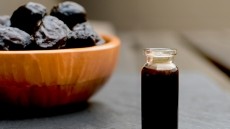More solutions, more strains: Singapore team behind probiotic survival solution to expand investigations

The team at Nanyang Technological University (NTU), recently assessed the effects of the sucrose and alginate encapsulation formula on the survival rate of Lacticaseibacillus rhamnosus GG (LGG).
This encapsulation formula was tested against other encapsulation formulas, for example, 1) sucrose only, 2) alginate only, 3) alginate with sucrose, and 4) crosslinked calcium-alginate.
Results showed that all formulations yielded a CFU of more than 10bn of surviving LGG after the spray drying process.
However, those with sucrose and alginate – which is cross linked with calcium – yielded higher viability counts of LGG, with over 10bn CFU surviving.
“The calcium-alginate-sucrose matrix was identified as best performing in conferring gastroprotection to LGG, with lowest CFU/g losses of 0.47 log10(CFU/g) following SGF (simulated gastric fluid) exposure,” said the researchers.
When stored at four degree Celsius, the probiotics encapsulated with sucrose and crosslinked calcium-alginate maintained a CFU count of 10bn after eight weeks.

Findings of the research were published in Carbohydrate Polymers.
“Our technology is superior in protecting the probiotics within these beverages – beer, soda, carbonated drinks – as compared to unencapsulated probiotics,” associate professor Joachim Loo from NTU’s School of Materials Science and Engineering, who also led the study, told NutraIngredients-Asia.
The researchers also tested the encapsulation technique on other Lactobacilli probiotics, namely L. plantarum and L. paracasei and similar results were seen.
Why sucrose and alginate?
Sucrose is used as it helps to protect the probiotics from high temperature during the spray drying process. The cross-linked alginate, on the other hand, helps protect the probiotics from being disintegrated by the stomach acid before reaching the intestines.
Sucrose helps to protect the probiotics from being destroyed by the high temperature of the spray drying process by stabilising the cellulose membrane of the probiotics.
“Protective sugars are a common excipient that are commonly used for spray drying probiotics. So, we looked through the literature on the kind of sugars tend to work better and we found that sucrose is one.
“The mechanism is that it will stabilise the cellular membrane of this probiotic bacteria. It prevents them from rupturing and being combusted within the high temperature conditions,” Tan Li Ling, PhD student at NTU’s School of Materials Science and Engineering told NutraIngredients-Asia.
Tan is also the first author of the study.
On the other hand, alginate – when in the cross-linked form with calcium choride – could help to “act as a scaffold to hold the probiotics”, said Prof Loo.
“Alginate is water-soluble, if you do not cross-link it, it will dissolve very quickly. If you cross link it, it acts as a scaffold to hold the probiotics, so that becomes the protective layer, along with the sugars,” he explained.
WATCH the video below to find out how the NTU-developed coated probiotics are manufactured.
Advantages
Aside from increasing the survivability of probiotics, the other advantages of the technology include affordability and using food-grade instead of synthetic materials.
“First of all, when we embarked on this project, we actually realised that a lot of the commercially available probiotic products don't have encapsulation technologies with them. So, it seems that they is a lack in the first place, in which there's definitely a space to fill.
“We also found that out of those commercial products which uses encapsulation technologies, most of these provide a synthetic enteric layer outside the pill – which is not so suitable for a dietary supplement product.
“This is because when we talk about synthetic materials like these, they need to be controlled in terms of how much doses these patients or consumers can take in,” Tan said.
In addition, the technology offers gastric acid resistant properties during the spray-drying process – as opposed to spray drying the probiotics just using excipients alone.
“We saw another technology that tries to incorporate acid resistant properties to probiotics.
“But the problem with that is that their technology utilises volatile base – such as an alkaline base. We realised that this is also not suitable since probiotics are such pH sensitive microorganisms.”
Cost wise, Tan described it as quite affordable, since spray drying is a commonly used method and it is only a one-step process to encapsulate the probiotics.
Alginates and sugars are also affordable materials.
Moreover, with a higher survival rate, fewer probiotics will be required, allowing manufacturers to reduce their costs.
Available in the powder form, the encapsulated probiotics could be used in a range of products, including drinks and supplement pills, tablets, and powder.
Prof Loo also said that they were in discussion with a probiotic company which was keen in licensing the technology and use it on their probiotic strains.
“We are open to having investors coming on board to set up a company. If not, we are ready to work with companies who are very interested in this technology to license the patents.
“This is because beyond just the use of probiotics for human health, there is evidence that the use of probiotics in animal feed, and even in agriculture,” said Prof Loo.
Vitamin C, trehalose on the cards
Vitamin C and sugars such as trehalose are on the cards as the other potential probiotics encapsulation materials.
“We are still in the process of trying to improve the current technology. So the other protective sugars that we are planning to use in the future, sucrose and trehalose and other kinds.
“We are also trying to look at things like vitamin C to actually protect the probiotics even more throughout their shelf life,” said Tan.
In addition, the researchers will be conducting in vivo studies to find out if the sucrose and alginate encapsulation technology, by improving probiotics survival rate, could contribute to actual health benefits.
There are also plans to study the effects of this encapsulation technology on other species such as Bifidobacterium.
“On Bifidobacterium, this is something we are still trying to work on, because Bifidobacterium are much more finicky and not just that, they are an aerobic bacterium.
“We are still trying to optimise the composition of the protective agents that will best be able to protect the Bifidobacterium,” Tan said.



















